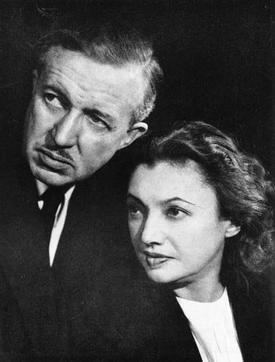 | ||
Lavender marriage is the popular term used to describe a male-female marriage in which one or both of the partners was homosexual or bisexual. The more general term is mixed-orientation marriage. It is a specialized instance of a marriage of convenience, in which the marriage is formed for some reason other than the romantic attachment assumed to be the basis of modern marriages, for legal reasons involving inheritance or immigration, for example.
The partners in a lavender marriage were concealing the fact that the sexual orientation of at least one of them was not primarily heterosexual. The term lavender marriage dates from the early 20th century and is used almost exclusively to characterize certain marriages of public celebrities in the first half of the 20th century, primarily before World War II. At the time, public attitudes toward homosexuality made it impossible for a person to pursue a public career, notably in the Hollywood film industry, while acknowledging homosexuality. One of the earliest uses of the phrase appeared in the British press in 1895 when lavender was associated with homosexuality.
Usage
With the inclusion of morality clauses in the contracts of Hollywood actors in the 1920s, some closeted stars contracted marriages of convenience to protect their public reputations and preserve their careers. A noteworthy exception that demonstrated the precarious position of the public homosexual was that of William Haines, who brought his career to a sudden end at the age of 35. He refused to end his relationship with his male partner, Jimmy Shields, and enter into a marriage at the direction of his studio employer, Metro-Goldwyn-Mayer. The term lavender marriage has been used to characterize these couples/individuals:
